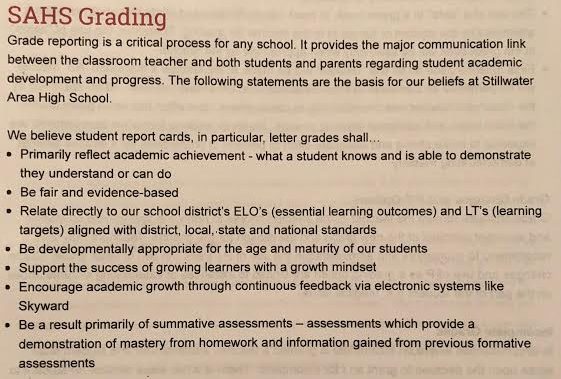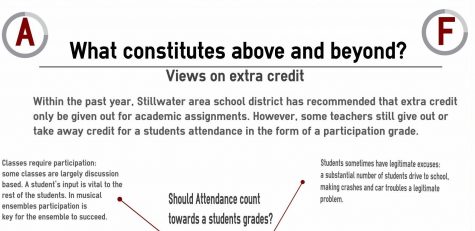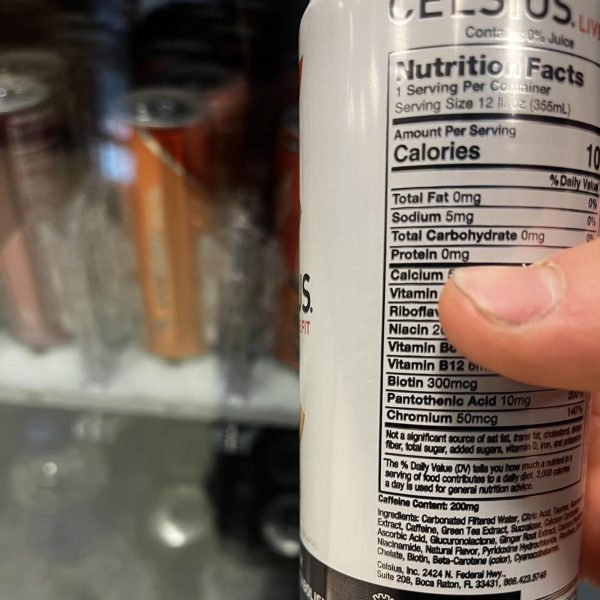Grading policies varies, consistency encouraged

The schools strong beliefs for a strong academic grading system.
November 13, 2018
The hot topic that is lingering throughout the schools hallway is the grading system. The grading system is not a gentle subject because of the fact that there are so many different opinions.
The middle schools grading system is the 80 percent summative, 20 percent formative rule all around. The middle schools grading system primarily helps to reflect the academic achievement overall, and it makes students feel organized and put together with their school work. The high school takes the grading systems on a different path. The educators at the high school are allowed to choose the grading system that they would like to use for their course for the year.
The school’s grading system is looked at with many opinions and sides. Many teachers at the school chose their own criteria to establish their own grading system to go along with their course. Some of the teachers chose to go through the same path as the middle schools in the district and do the 80-20 rule for their courses.
For the select teachers who chose their own criteria for grading, they can find both pros and cons. The great things about this path are that the teacher specifically choose certain percentages for their class that can give students success on the certain areas of the class.
But the downs talked about on this path is that students feel as if they have more instability with understanding the reasoning of their grade. It makes students more uneasy because it changes throughout many of the courses they are taking. Students believe they have more leeway with this system because they do not have to be on with all their summative assignments because they are not weighted as much, it gives them room to lack and be unbalanced in their school work.
“I think it’s confusing because students are not aware of what the percents lead to as a letter grade. And so different classes could mean different letter grades where like the same percent in the different classes could mean different letter grades as well,” senior Emma Lehmann said.
I think the 80-20 grading system is a very good system for stability and uniform grading in the building. It’s also a functional system that keeps kids accountable for their homework but also tests on what they know.
— Chelsea Dodds
Lehmann shared how it confuses her when each class she walks into the grading system is all so different, and how it does not give her a good range on how she is doing overall.
The other part of teachers who chose the 80-20 rule that is used in the district’s middle schools has had pros and cons as well. This form of the grading policy has had good feedback saying it gives the students great stability, and does not make the students doubt in anyway of how to perform. It also gives students a lot more accountability for themselves by understanding that the 80 percent summative is something not to mess around with, it is something they have to work hard for, and the 20 percent formative they should always put in their hardest work to get homework done to show their learning. One thing about this rule is it may be hard on some students grades that don’t take it seriously because, the summative section is weighed 80 percent and if they don’t try their grade could drop so fast.
“I think the 80-20 grading system is a very good system for stability and uniform grading in the building. It’s also a functional system that keeps kids accountable for their homework but also tests on what they know” English teacher Chelsea Dodds said.
Dodds had brought the 80-20 rule with her to Stillwater because that is what she learned when she taught at the middle schools. She has had great feedback from her students, and their learning and understanding of their work and grades is phenomenal.
Another teacher shed some light on the 80-20 rule, “I do agree with most parts of it that tests should be emphasized, but also some credit should be given to homework tasks”, Social studies teacher Ryan Miller said.
Mr. Miller believes that the system is very fair to the students and can actually help them to succeed greatly.
Many people have been questioning if the schools should choose on grading system throughout the high school just like both middle schools do. There are the two different sides on how the first one can help you prepare for college better, because not all colleges follow the same system. But for the second one people can agree its better to use that one because it gives more stability for younger kids, that are still learning. This is the hot topic for the school, whether to keep the grading systems how they are now, or have the same grading system all throughout the high school just like the middle schools.
















